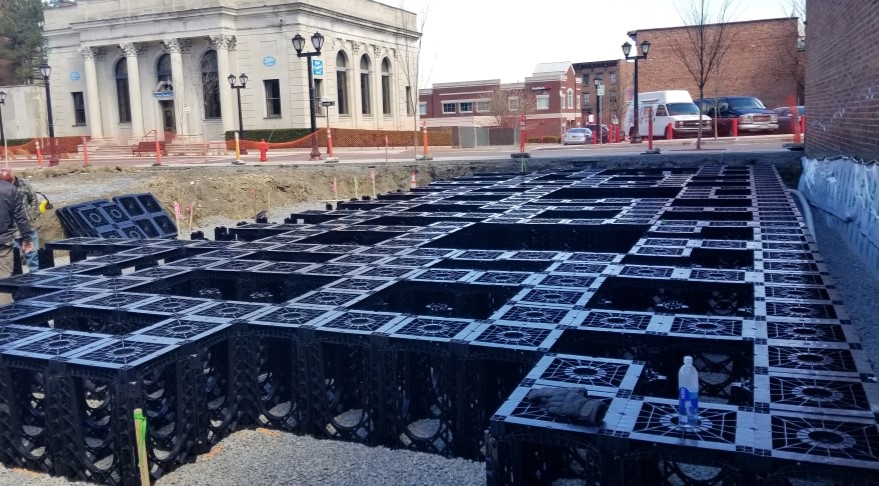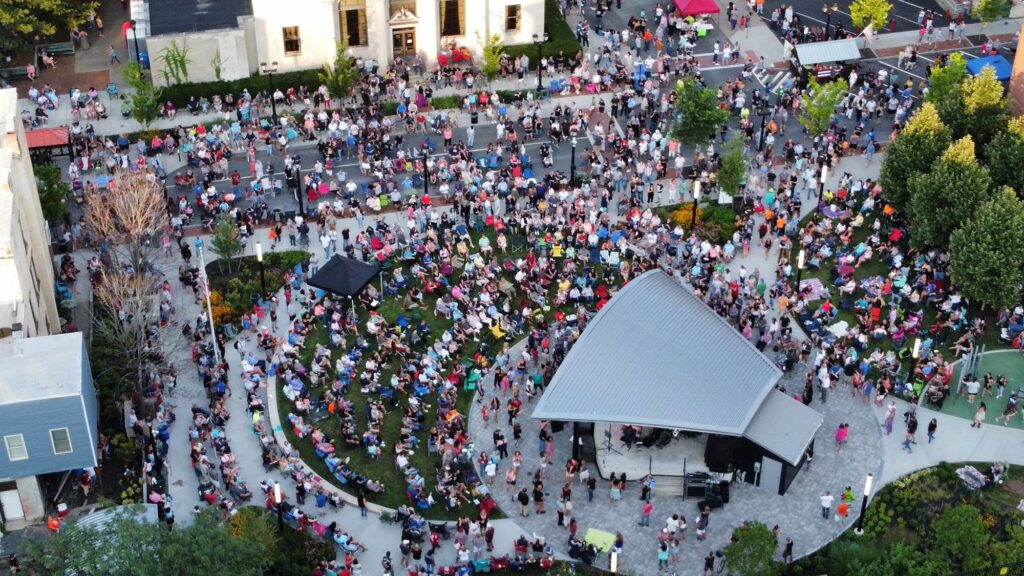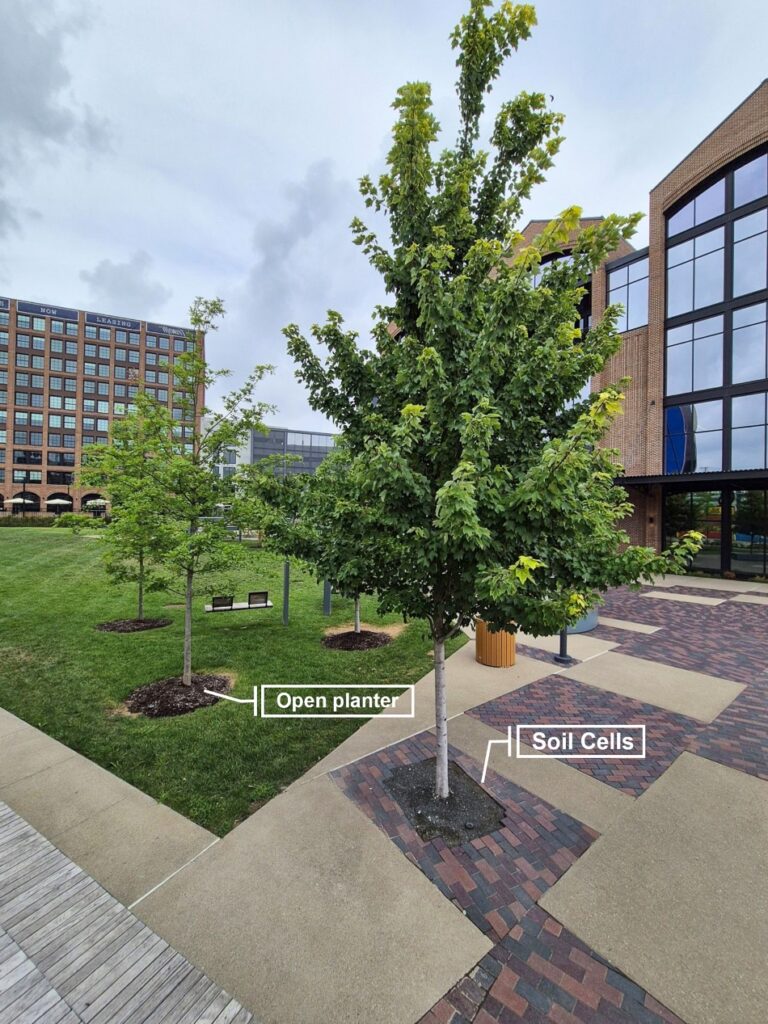While soil cells are most often installed under pavement when there’s a lack of green space, we’ve lately seen an uptick in projects specifying soil cells under grassy areas as well. Leading to the question, are there advantages to using soil cells under open planting areas?
Historically speaking, open planting areas have been regarded as the ideal growing environment, better even than soil cells.
But is that changing?
Like every good question, the answer is “It depends.”
Factors to Consider:
- Prior Use of the Area: Was the soil previously compacted in order to support pavement? Or was heavy equipment used in the area during the construction process? (Often the case with new-builds.) As our cities become more built-up with new layers of infrastructure, soil is increasingly compacted, even in open areas.
- Future Use of the Area: Will there be events held, heavy pedestrian traffic, or small vehicle access needed on the green space around the trees? In recent years it has been discovered that frequent heavy foot traffic can compact soil significantly more than previously thought. Pressure from people’s footsteps compresses the soil, reducing the air pockets between the particles.
Case Study: Canal Square Park – Cohoes, NY
In the case of this park project in Cohoes, NY, RootSpace soil cells were installed under these trees to conquer two challenges – 𝗰𝗼𝗺𝗽𝗮𝗰𝘁𝗲𝗱 𝘀𝗼𝗶𝗹, 𝗮𝗻𝗱 𝘀𝘁𝗼𝗿𝗺𝘄𝗮𝘁𝗲𝗿 𝗺𝗮𝗻𝗮𝗴𝗲𝗺𝗲𝗻𝘁.
Trees couldn’t be directly installed after the pavement was removed, as it had been compacted to support the pavement. The green space around the trees was also expected to sustain heavy pedestrian traffic and occasional small vehicle access for Cohoes’ events – like their Farmers Market and Rock the Block concerts. This level of traffic could easily compact the soil.
Now RootSpace soil cells provide healthy, uncompacted soil to these trees. The roots will grow unhindered and the soil will be able to “breathe”, regardless of how many concert-goers rock the block above ground. There’s also more room for stormwater to be stored, absorbed and ultimately released back into the air via evapotranspiration.



Case Study: Nashville, TN
Looking at another example, we recently revisited Music City to see how our trees were getting on, and noticed something interesting.
Next to the trees in soil cells were trees were trees in an open planting area. Although the trees were the same species and planted at the same time, there was significant difference in the health and size between the two planting methods. In this case, heavy equipment was likely used in the area while constructing the nearby building. This is another case where they would have seen better results had they installed cells in that area as well.
We were proud to see that the trees in RootSpace soil cells are thriving and growing quickly.

So the answer is yes: occasionally, and increasingly, there are advantages to using soil cells under open planting areas.
Does this method apply in every case? No. Much of the time, open planting areas still provide the best and cheapest method of delivering uncompacted soil to the tree when there is space to do so.
However, it’s worth considering whether the planting area on your project will actually provide truly uncompacted soil, as this makes the most measurable difference for trees. There is substantial evidence that it is the key to faster, healthier growth of urban trees. Consider whether it might be applicable to your project, and if unsure, contact us for custom, expert advice.
